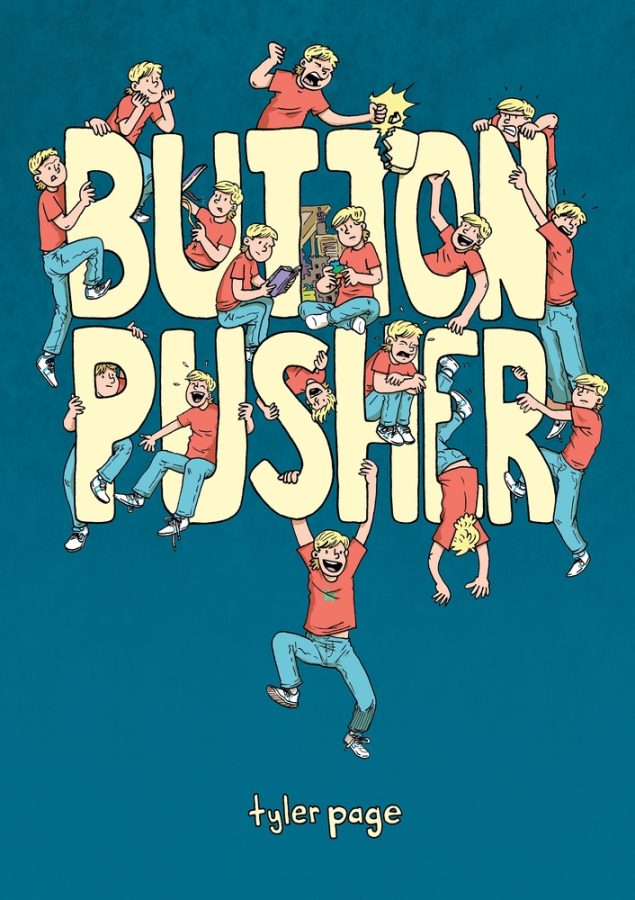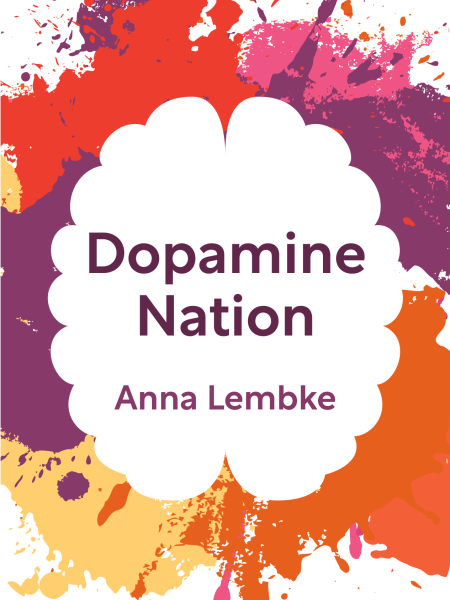A Review of Button Pusher
February 28, 2023
Button Pusher is a young adult graphic nonfiction novel written and illustrated by Tyler Page. It is based on Page’s experiences growing up with Attention-Deficit/Hyperactivity Disorder (ADHD). The book chronicles Tyler’s adolescence to early adulthood, as he grapples with schoolwork, socializing, hobbies, and family disfunction, made all the more difficult by his disorder.
The novel’s purpose is to dispel myths surrounding ADHD. Tyler is portrayed as a child who, despite his brightness, struggles to pay attention in class, think through his actions, and recall short term memories. The people around Tyler, including his mother, father, and little brother struggle with teaching him to grow past these challenges. In addition to growing up, Tyler must also deal with trying different methods to quell his disorder, while people fail to understand him. Reflecting on his experiences, older Tyler acts as a narrator for his story through text boxes, analyzing the moments that confused him and others. By tying the causes of these moments to his disorder, Tyler explains why they happen and clears up any misconceptions. Additionally, the plot is occasionally broken up by interludes that go into more depth on ADHD. These pages use medical research to explain the disorder. These serve as a balance to the main plot and offer great educational value.
Being a graphic novel, much of the enjoyment comes from the art’s quality. Thankfully, the book has an art style that is quite pleasant to look at. The character designs are standardly cartoonish, resembling the newspaper cartoons that Tyler read as a child, yet convey emotion very well. For example, the eyes of Tyler’s father sometimes have their pupils go missing to reflect his anger, making him seem more monstrous. This is paired with the backgrounds shifting into blends of red and orange, reflecting the extreme anger of these situations. Outside of Tyler’s home life, however, the characters outside of Tyler remain as emotive as one would expect from a graphic novel of this nature. If the style could be described in one word, I would choose “normal,” and I believe this was intentional on the author’s part. While the art style isn’t jaw droppingly beautiful like other graphic novels, it being “normal” is a necessity for several reasons. As a nonfiction story, it needs to resemble real life while still being visually appealing to its target audience. Additionally, the normalcy of the outside world contrasts the chaos of Tyler’s disorder and home life.
Button Pusher is a great nonfiction story and learning experience. Through charming art, relatable characters, and information on living with ADHD, it makes for an entertaining, educational, and emotional read. I would especially recommend this to people who know someone with ADHD.







